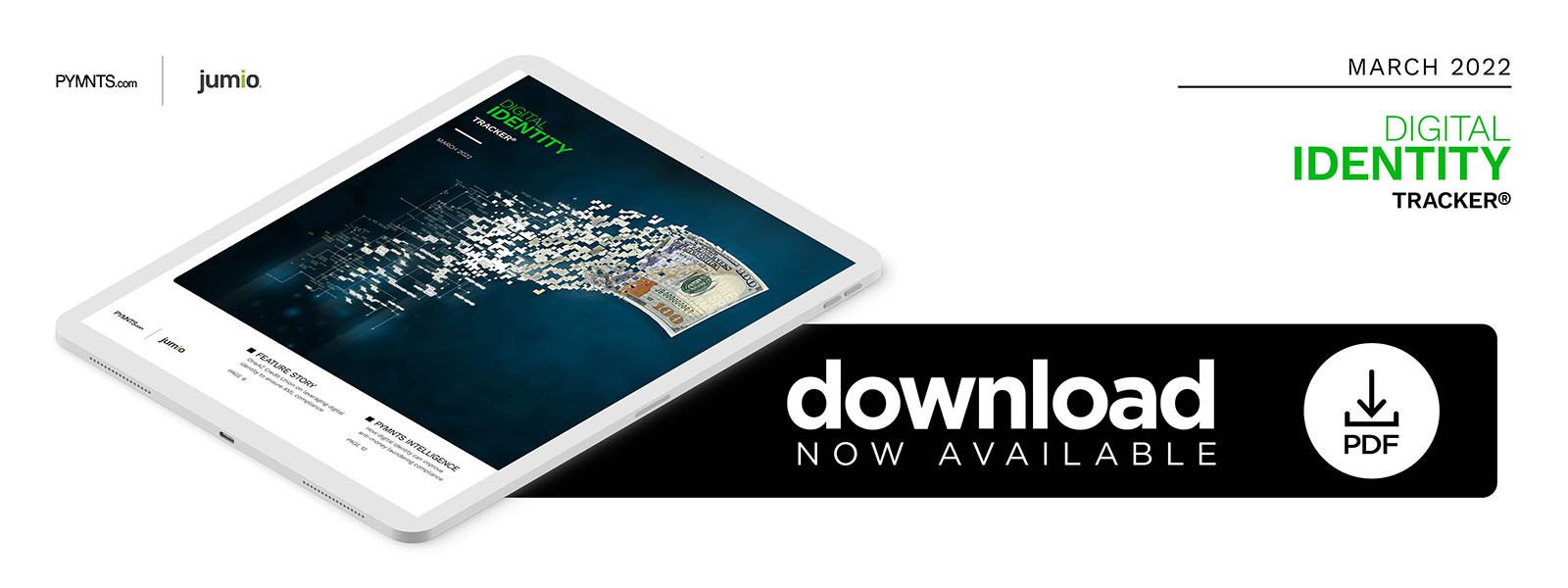PYMNTS Intelligence: How Digital Identity Can Reduce Money Laundering and Improve AML Compliance

Money laundering is a perpetual challenge for banks, payments providers and the oversight agencies assigned to monitor them.
Experts estimate that up to 5% of the global gross domestic product (GDP) is laundered each year, a total of $2 trillion, and half of all money laundering goes completely undetected. Cutting off these funds could cripple organized crime, terrorist financing and other critical dangers, making it a top priority for law enforcement agencies worldwide.
Banks and payments processors themselves bear much of the responsibility for finding and stopping money laundering, however, and they are subject to stiff penalties if they fail to identify it. Last year saw nearly $2 billion in fines leveled against banks in the U.S. alone, putting immense pressure on financial institutions (FIs) to keep money laundering under control.
Many banks and processors are turning to advanced digital identity verification techniques to crack down on money laundering and avoid penalties. This month, PYMNTS Intelligence examines the various money laundering methods and how digital identity technologies can keep them at bay.
How Bad Actors Attempt to Launder Money
Money laundering has been in practice for as long as authorities have been tracing criminals by following their money, but the digital age has been a game-changer for launderers, opening countless new doors for processing their ill-gotten gains. The most popular type is transaction laundering or electronic money laundering, which accounts for $200 billion a year in the U.S. alone. The process can be divided into three major categories.
The first category consists of using front companies, which are online merchants set up by money launderers under the guise of selling legitimate goods and services. These front businesses doctor receipts, inflate or invent transactions and leverage a range of tactics to misreport their earnings and process their stolen funds. This category of laundering is difficult to detect because it is hard for card or payments processors to ascertain whether goods or services have changed hands as well as the actual value of these transactions.
The second means of transaction laundering involves the use of pass-through companies, which launderers do not set up themselves. These companies instead allow the launderers — knowingly or not — to process illicit transactions through their accounts.
The third category of transaction laundering uses funnel accounts, which consist of payment accounts with processors that work for multiple merchants and process illicit transactions alongside legal ones — again, either knowingly or unknowingly. Both schemes are extremely challenging for card processors to detect because illicit transactions are mixed in with legitimate ones, making it next to impossible to figure out which transactions are which.
Banks and payments providers are on the hook for ensuring stolen funds stemming from these money laundering schemes do not pass through their systems, with harsh punishments exacted if they fall short. Digital identity verification systems are proving popular as a means of authenticating customers and making sure they are not using payments systems to store or process illicitly obtained funds.
Leveraging Digital Identity to Improve AML Compliance
Meeting compliance regulations is a difficult task for many organizations. According to a recent survey, 44% of companies cited manual compliance assessments as a primary concern. Sixty-three percent of firms reported using inadequate knowledge management software to ensure compliance, and 76% said they manually track regulatory websites to keep tabs on the latest compliance regulations, running the risk of being out of date and receiving massive fines.
Further challenges include attempting to prevent money laundering while maintaining a convenient customer experience, as 42% of customers have abandoned online onboarding processes for being too laborious.
Digital identity protocols make it far easier to track bad actors attempting to launder money, according to the Financial Action Task Force (FATF), which released comprehensive guidance on how digital identities can be folded into anti-money laundering (AML) systems. Tools such as behavioral analysis operate entirely behind the scenes, removing a friction layer and offering customers a more seamless onboarding experience. The FATF also recommended distributed ledgers, digital credentials and biometrics as other digital identity technologies to reduce the risk of money laundering and aid in AML compliance.
Implementing these measures can be time-consuming and expensive, but their costs are minimal compared to the potential penalties levied by regulatory bodies. Customers also are willing to put up with some security measures, with 88% of consumers in a study of digital identity citing security as their top priority. Offering this peace of mind to consumers promises to pay off in the long run by fostering a positive reputation for strong anti-fraud and AML measures.
